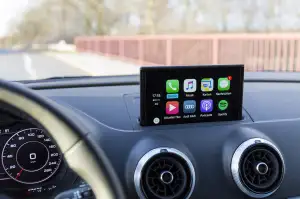Level Up Your Tech Game: The Ultimate Guide to Building a Sim Racing Rig

- PC System Requirements
- VR Headset Compatibility
- Monitor Selection Guide
- Steering Wheel Base Options
- Pedal Systems Explained
- Shifter and Handbrake Choices
- Sim Racing Software Options
- Motion Platforms and Actuators
- Sound System Recommendations
- Button Box and Dashboards
- Cable Management Solutions
- Future-Proofing Your Rig
PC System Requirements
When diving into sim racing, your PC becomes the engine of your virtual race car. The more horsepower you have under the hood, the smoother and more immersive your experience will be. Let's break down the system requirements to hit the track with confidence.
For a smooth and enjoyable sim racing experience, aim for a PC that meets or exceeds the recommended specifications of your chosen sim racing software and any additional peripherals you plan to use. Remember, a more powerful PC will generally provide smoother frame rates, higher resolutions, and better overall performance.
A modern quad-core CPU, like an Intel Core i5 or AMD Ryzen 5, should be your starting point. If you're serious about high frame rates and future-proofing your setup, consider a six-core or eight-core CPU for optimal performance.
8GB of RAM is the bare minimum, but 16GB is highly recommended to ensure smooth multitasking and prevent performance hiccups while racing.
When it comes to graphics, a dedicated graphics card is non-negotiable. An NVIDIA GeForce GTX 1660 Super or an AMD Radeon RX 5700 are solid entry points. For higher resolutions and graphical fidelity, explore options like the RTX 30 series or Radeon RX 6000 series.
Ensure you have a fast and reliable SSD to store your operating system, sim racing software, and frequently used files. An SSD will significantly reduce loading times and improve overall system responsiveness.
Sim racing is demanding on your system, so a reliable power supply is crucial. Aim for a power supply from a reputable brand with a wattage rating that comfortably accommodates your components.
While not mandatory, a sound card can enhance the immersive audio experience of sim racing. Look for a sound card that supports surround sound formats like Dolby Atmos or DTS:X for a truly captivating audio environment.
VR Headset Compatibility
When choosing a VR headset for your sim racing rig, compatibility is key. Not all headsets work seamlessly with all sim racing software and platforms. Before you invest in a headset, check its compatibility with your preferred sim racing titles and your PC specs.
Most major VR headsets, like the Valve Index, HTC Vive Pro 2, and Meta Quest 2 (with a link cable), are compatible with popular sim racing simulators like iRacing, Assetto Corsa Competizione, and RaceRoom Racing Experience. However, some less-known simulators or older titles might not offer the same level of support.
Make sure your PC meets the minimum or, even better, recommended specifications for both the VR headset and the sim racing software. VR demands a lot from your system, so a powerful graphics card and processor are crucial for a smooth and immersive experience. Don't forget to factor in the refresh rate of the headset. A higher refresh rate, like 90Hz or 120Hz, provides a smoother and more responsive experience but requires even more processing power.
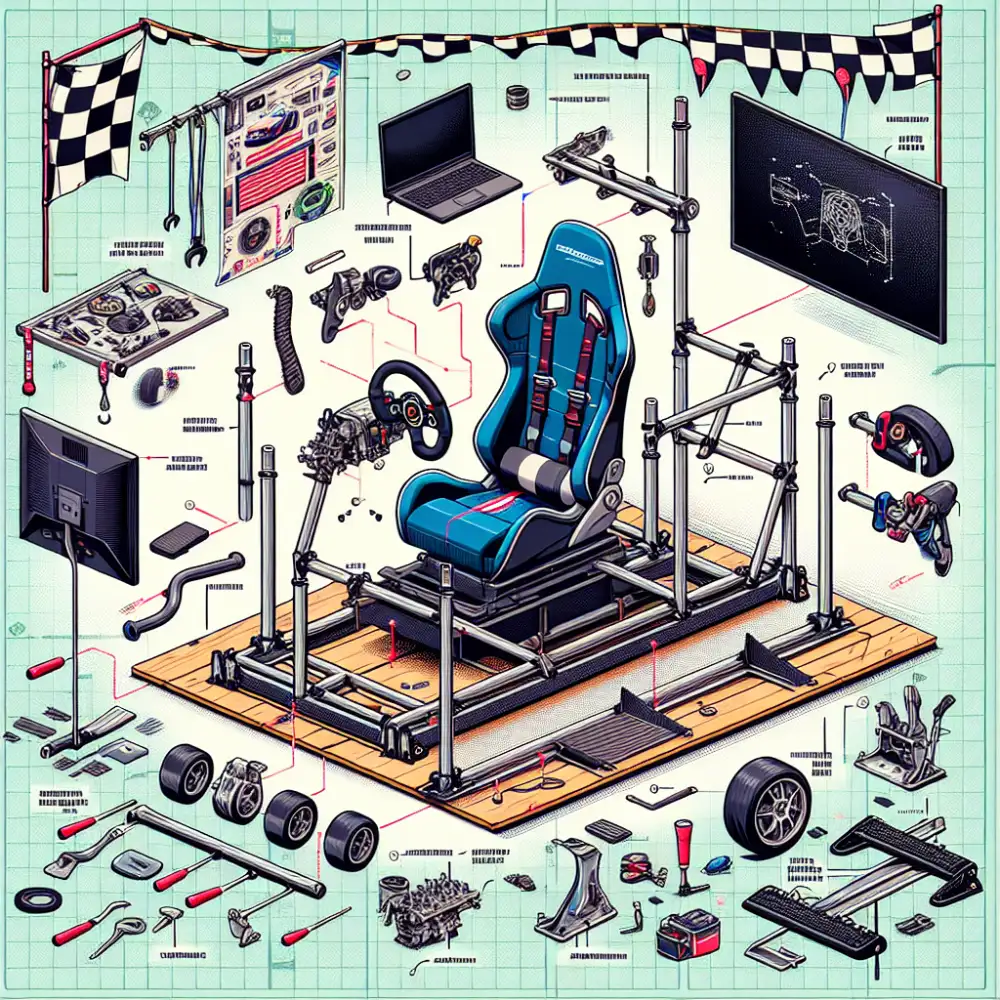
Monitor Selection Guide
When choosing a monitor for your sim racing rig, there are several key factors to consider:
Size and Resolution: A larger screen with higher resolution provides a more immersive experience. For sim racing, a minimum of 27 inches is recommended, with 32 inches or larger being ideal. Aim for a resolution of at least 1920x1080 (1080p), but consider 2560x1440 (1440p) or even 3840x2160 (4K) for sharper visuals.
Refresh Rate: A higher refresh rate results in smoother motion, which is crucial for sim racing. Look for a monitor with at least a 144Hz refresh rate. Higher refresh rates, such as 240Hz or even 360Hz, offer even smoother gameplay but come at a premium price.
Response Time: A low response time reduces motion blur and ghosting. Aim for a response time of 1ms (millisecond) or less for the best results.
Panel Type: There are three main panel types: TN, IPS, and VA. TN panels offer the fastest response times but may have inferior color accuracy and viewing angles. IPS panels provide excellent color accuracy and wide viewing angles but can suffer from slower response times. VA panels offer a balance between response time and color accuracy. For sim racing, IPS or VA panels are generally preferred.
Curved vs. Flat: Curved monitors can enhance immersion by providing a wider field of view. However, they can also cause distortion and may not be suitable for all sim racing setups. Ultimately, the choice between curved and flat is a matter of personal preference.
Adaptive Sync Technology: Technologies like NVIDIA G-Sync and AMD FreeSync help to reduce screen tearing and stuttering, resulting in a smoother gaming experience. If you have a compatible graphics card, consider a monitor that supports one of these technologies.
Steering Wheel Base Options
When choosing a steering wheel base for your sim racing rig, you have several options:
Direct Drive Systems offer the most realistic force feedback, with powerful motors directly driving the steering shaft. They provide the most detail and responsiveness but come at a premium price. Popular brands include Simucube, Fanatec Podium, and VRS.
Belt-Driven Systems strike a balance between performance and affordability. They use belts to connect the motor to the steering shaft, offering smoother and quieter operation than gear-driven systems. Fanatec CSL DD and Thrustmaster T300 are popular belt-driven options.
Gear-Driven Systems are the most affordable but can suffer from "notched" force feedback due to the gears. However, they still offer a significant upgrade over controller-based racing. Logitech G29 and Thrustmaster T150 are common gear-driven choices.
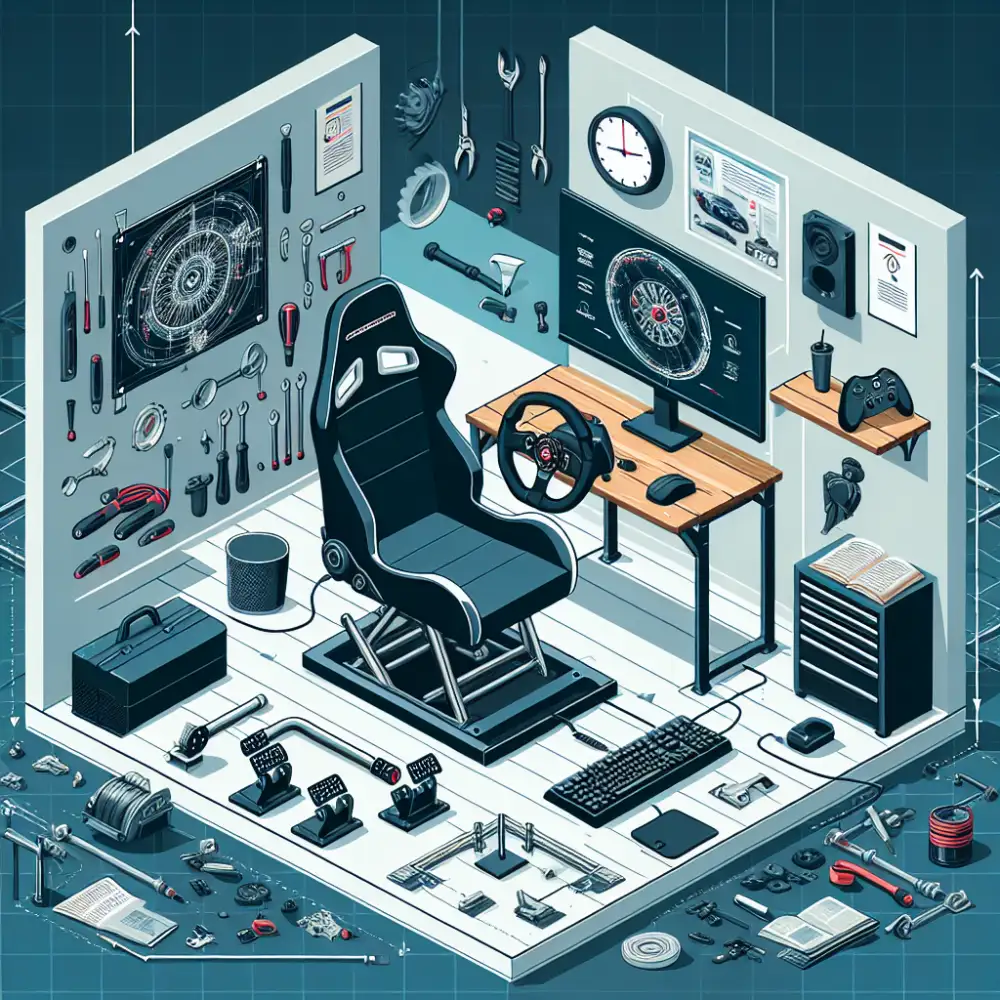
Consider your budget and desired realism when choosing a base. Direct drive offers the most immersive experience, while belt-driven systems provide a great balance. Gear-driven options are perfect for beginners or budget-conscious racers.
Pedal Systems Explained
When building your sim racing rig, choosing the right pedal system is crucial for an immersive experience. Let's break down the world of sim racing pedals to help you make an informed decision.
| Feature | DIY Build | Pre-built Rig |
|---|---|---|
| Cost | $500 - $2000+ (Highly variable) | $800 - $4000+ |
| Customization | Fully Customizable | Limited to Brand Options |
| Build Time | Several Hours to Days (depending on complexity) | 1-2 Hours for Assembly |
| Space Requirements | Variable, can be compact or large | Often Larger Footprint, pre-designed size |
| Technical Skill | Moderate to High (depending on complexity) | Low (basic assembly) |
Types of Pedals
Potentiometer Pedals: These entry-level options use potentiometers to measure pedal movement. They are affordable but can wear down over time, affecting accuracy.
Hall Effect Pedals: A step up, these pedals use magnetic sensors (Hall effect sensors) for increased durability and precision. They offer a smoother and more consistent feel.
Load Cell Pedals: The gold standard in sim racing, load cell pedals measure the force applied to the pedal, not just the travel distance. This provides the most realistic braking feel and allows for techniques like trail braking.
Key Features to Consider
Material and Build Quality: Look for pedals made from robust materials like aluminum for durability.
Adjustability: Being able to adjust pedal spacing, angle, and even the resistance curve is crucial for comfort and finding the perfect driving position.
Clutch Pedal: If you plan on driving cars with manual transmissions, a dedicated clutch pedal is essential.
Software and Calibration: Some pedals come with software that allows you to fine-tune the pedal response, dead zones, and more.
Price Range
Sim racing pedals cater to various budgets. You can find entry-level potentiometer pedals for under $100, while high-end load cell pedals can cost several hundred dollars.
Making the Right Choice
The best pedal system for you depends on your budget, desired realism, and the type of racing you enjoy. If you're serious about sim racing and want the most authentic experience, investing in a good set of load cell pedals is highly recommended. However, if you're just starting, quality potentiometer or Hall effect pedals can still provide a significant upgrade over basic controller pedals.
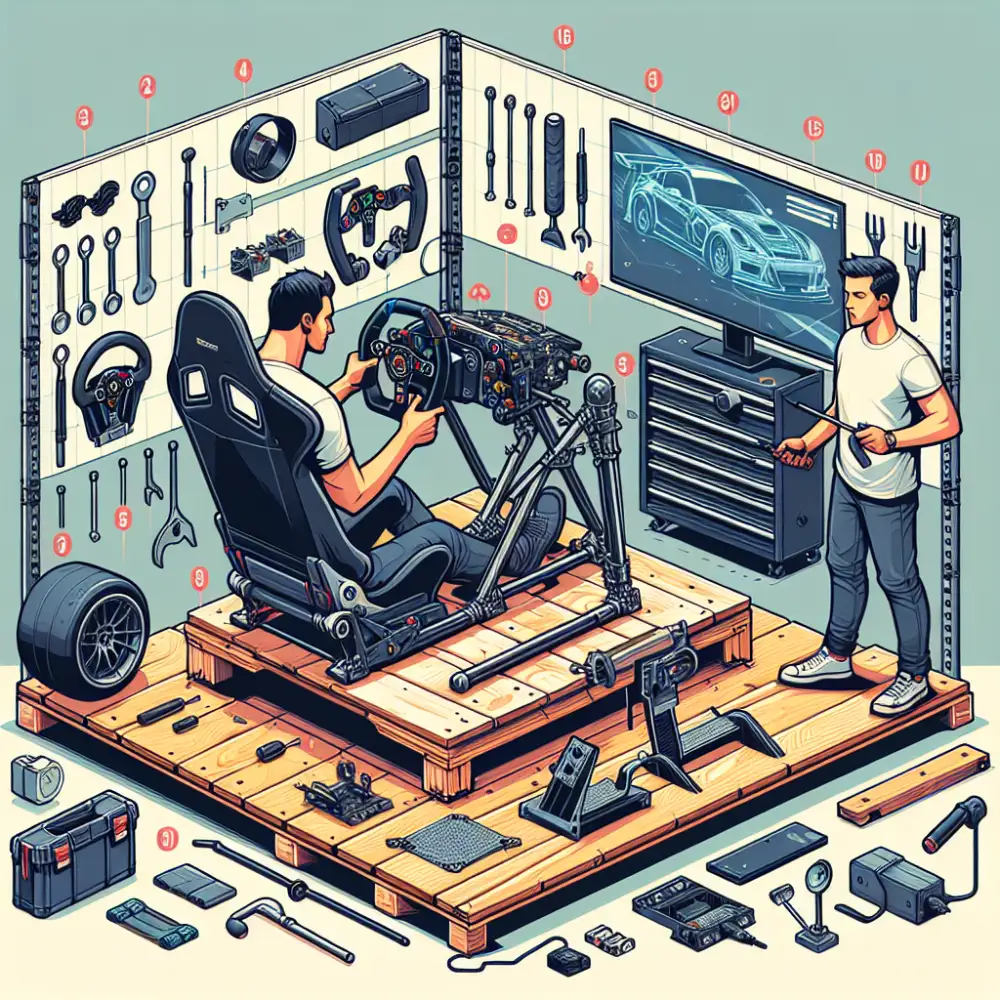

Shifter and Handbrake Choices
When building your sim racing rig, choosing the right shifter and handbrake can significantly enhance the immersion and realism of your virtual driving experience.
For shifters, you have two primary options: H-pattern shifters and sequential shifters. H-pattern shifters mimic the traditional manual transmission found in most road cars, allowing you to shift through gears in an H pattern. Sequential shifters, on the other hand, enable you to shift up and down gears sequentially, much like race cars. The choice between the two depends on your preferred racing style and the types of cars you enjoy driving.
Handbrakes are essential for rally racing and drifting, providing precise control over the vehicle's angle and rotation. You can opt for a standalone handbrake or a shifter with an integrated handbrake. Standalone handbrakes offer greater flexibility in positioning and customization, while integrated handbrakes provide a more compact solution.
When selecting a shifter and handbrake, consider factors such as build quality, shifter feel, handbrake resistance, and compatibility with your racing simulator and wheelbase. It's also crucial to choose components that align with your budget and overall sim racing goals.
Sim Racing Software Options
When it comes to sim racing software, you have a ton of options, each with its own strengths and weaknesses. Your choice will depend on your budget, preferred racing style, and the level of realism you're after.
First up, we have the giants like iRacing and Assetto Corsa Competizione. iRacing is subscription-based and known for its laser focus on online competition. It boasts incredibly realistic physics and a massive community of serious racers. ACC, on the other hand, is a one-time purchase that leans heavily into GT3 and GT4 racing. It's visually stunning and offers a challenging but rewarding driving experience.
If you're on a tighter budget, don't worry! There are fantastic free options like RaceRoom Racing Experience. It offers a good selection of free content and a paid DLC model for more cars and tracks. Automobilista 2 is another strong contender, especially if you're a fan of Brazilian motorsport. It features a dynamic weather system and a wide variety of cars and tracks.
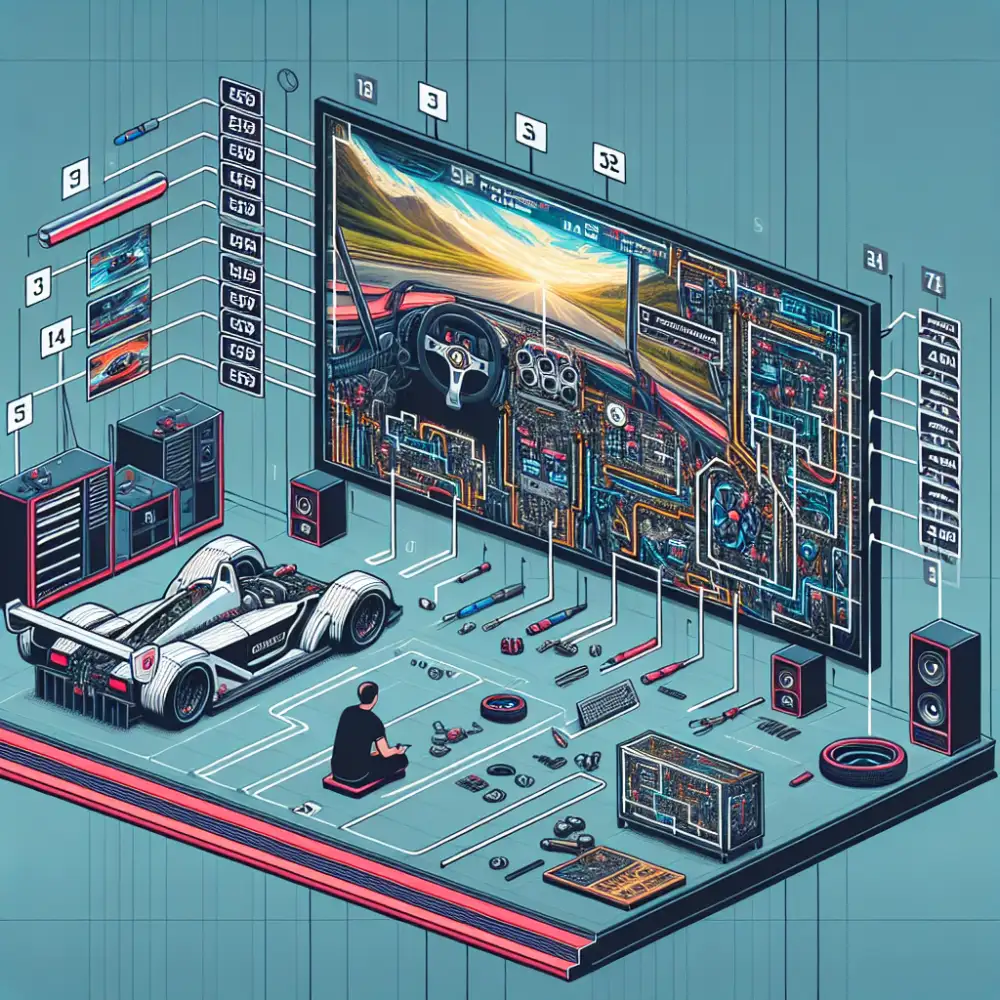
For those who like to tinker, rFactor 2 is a highly customizable platform favored by many sim racing veterans. It might have a steeper learning curve, but its depth and realism are unmatched. And let's not forget the original sim racing king, Gran Turismo 7. While not as hardcore as some of the others, it offers a polished and accessible experience, perfect for beginners and casual racers alike.
Ultimately, the best sim racing software for you depends on your individual needs and preferences. Don't be afraid to try out demos or free trials before committing to a purchase. And most importantly, have fun out there on the virtual track!
Motion Platforms and Actuators
Motion platforms and actuators add a new dimension to sim racing, providing realistic force feedback that lets you feel the road like never before. They range from simple two-degree-of-freedom (DOF) systems that simulate acceleration and braking to sophisticated six-DOF platforms that replicate the full range of vehicle movement.
Actuators are the muscles of a motion platform, responsible for moving the rig. The most common types are linear actuators, which use electric motors to extend and retract a shaft, and traction loss systems, which use rollers to simulate slides and spins.
When choosing actuators, consider factors like force, speed, and precision. More powerful actuators deliver stronger feedback but can be more expensive. Faster actuators provide quicker responses, enhancing immersion. Precision is crucial for accurate simulation, especially in high-end setups.
Building a motion platform can be a rewarding DIY project, but it requires technical skills and careful planning. Numerous resources and communities online offer guides, tutorials, and support for sim racers interested in motion simulation.
Before diving into motion platforms, ensure your sim racing rig is robust and stable. The added forces and movements can stress the frame, so reinforcement might be necessary. Additionally, research and choose a motion platform software that integrates seamlessly with your racing simulator and hardware.
Motion platforms in sim racing are a significant investment but offer an unparalleled level of realism and immersion. Carefully consider your budget, technical expertise, and desired level of simulation before making a decision.
Sound System Recommendations
When it comes to sim racing, immersive audio is just as important as visuals. The right sound system can put you right in the driver's seat, letting you hear every tire squeal and engine roar. Here's a breakdown of your options:
Headsets offer the most immersive experience, with close-proximity sound and excellent spatial awareness. Look for headsets with a wide frequency response for rich audio and features like surround sound for accurate positional audio. Popular choices include brands like Sennheiser, HyperX, and Logitech.
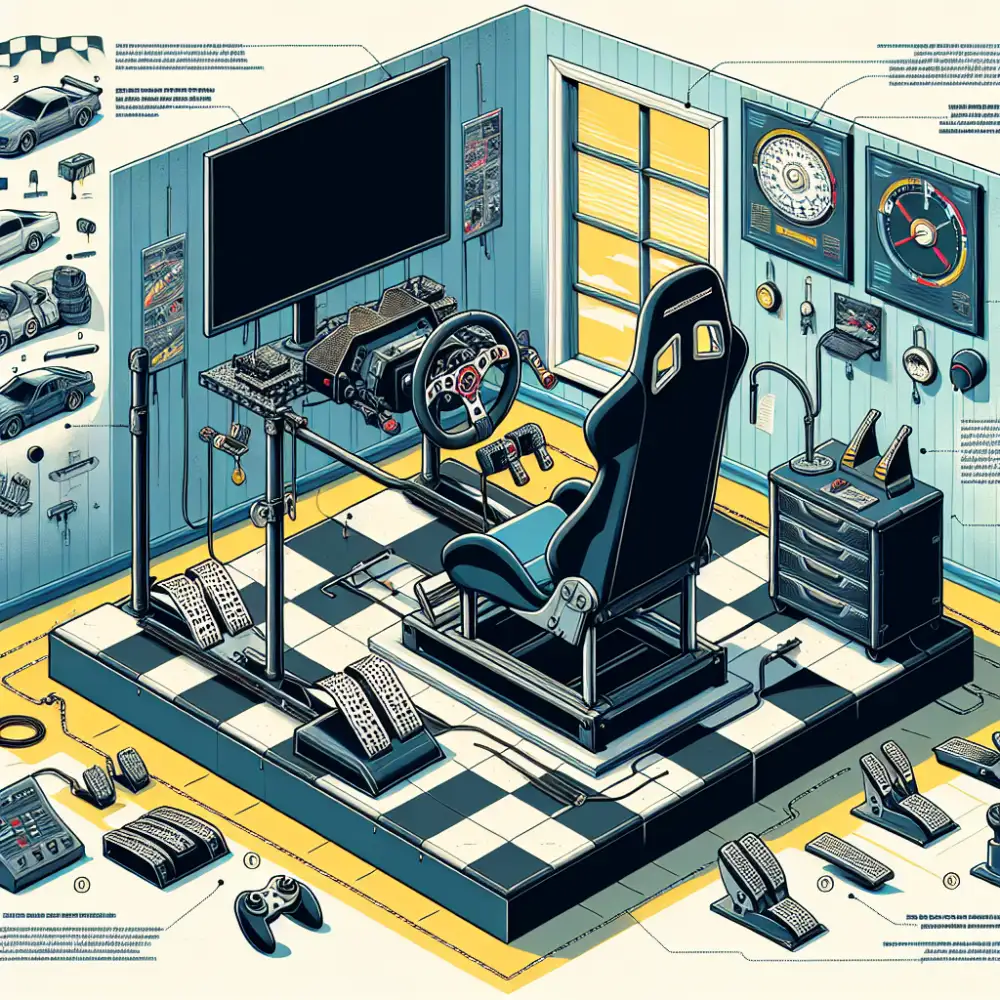
If you prefer not to have something on your head, a dedicated 2.1 or 5.1 speaker system is a great alternative. These systems typically consist of two speakers (left and right) and a subwoofer for low-end frequencies. A 5.1 system adds rear speakers and a center channel for even more immersive sound. Look for speakers with clear audio reproduction and a wide soundstage. Logitech, Klipsch, and Creative are popular brands in this category.
Don't forget about your sound source. Your PC's onboard sound card might be sufficient, but a dedicated sound card or external DAC (Digital-to-Analog Converter) can significantly improve audio quality. These devices process audio signals more effectively, resulting in clearer, more detailed sound.
Ultimately, the best sound system for your sim racing rig depends on your budget, preferences, and available space. Consider what's most important to you, whether it's immersive surround sound, crystal-clear audio quality, or a balance of both.
Button Box and Dashboards
A button box and dashboard can seriously up your sim racing game. They add a level of immersion and realism you just can't get from a keyboard or even a standard controller. Plus, having dedicated buttons and knobs for things like brake bias, traction control, and fuel mixture can give you that extra edge in a race.
When it comes to choosing a button box or dashboard, you've got options. You can buy pre-built units, which is the easiest route. There are tons of brands out there offering various configurations and price points. If you're more the DIY type, building your own is totally doable. You'll need some basic electronics knowledge and components, but there are plenty of guides and resources online.
For dashboards, you can go all out with a multi-screen setup that mimics a real race car, or keep it simple with a single screen displaying essential telemetry. Some people even use tablets or old smartphones as makeshift dashboards.
Connecting your button box and dashboard to your PC is usually pretty straightforward. Most use USB, so it's just plug-and-play. You'll then need to map the buttons and controls to your sim racing software of choice. This might take a bit of time and tweaking to get it just right, but it's well worth the effort.
Remember, a button box and dashboard aren't essential for sim racing, but they can definitely enhance the experience. Whether you buy pre-built, DIY, or keep it simple, having those extra controls at your fingertips can make a world of difference in how immersed and competitive you are on the virtual track.
Cable Management Solutions
Effective cable management is crucial for a clean and functional sim racing rig. A messy setup with tangled wires not only looks bad but also poses tripping hazards and can even affect performance. Here are some tips for keeping your cables in check:
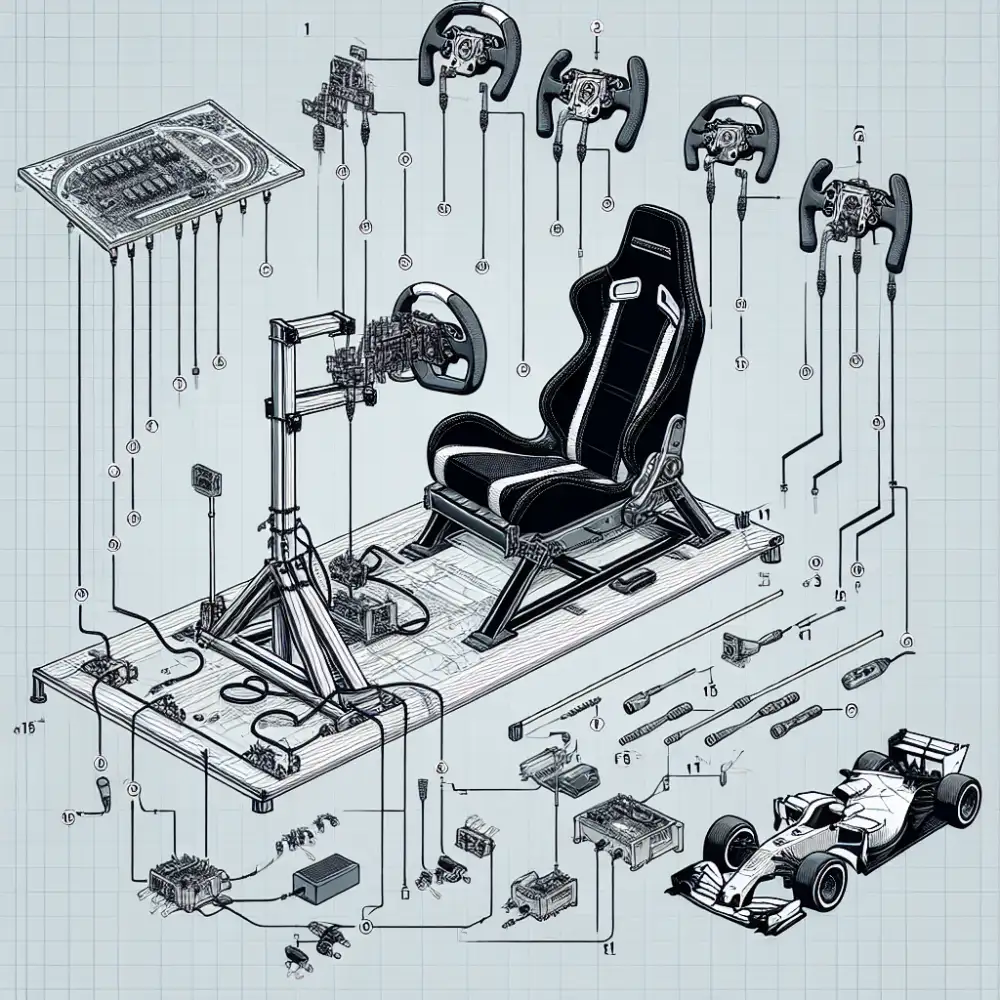
- Plan Your Routing. Before you even start connecting cables, think about where you want them to go. Consider using cable ties or Velcro straps to bundle wires together and route them along the frame of your rig.
- Use Cable Trays or Channels. For a more professional look, consider installing cable trays or channels under your desk or along the walls. This will keep your cables organized and out of sight.
- Label Everything. Once your cables are routed, label them clearly at both ends. This will save you a lot of time and frustration later on when you need to make changes or troubleshoot problems.
- Go Wireless Where Possible. Consider investing in wireless peripherals, such as a keyboard, mouse, and headphones. This will significantly reduce cable clutter.
- Secure Cables to the Rig. Use cable clips or ties to secure cables to the frame of your rig. This will prevent them from dangling and getting in the way.
- Choose the Right Length Cables. Avoid using cables that are too long, as this will only add to the clutter. Measure carefully and purchase cables that are the appropriate length for your needs.
- Regular Maintenance. Over time, cables can become loose or disconnected. Make it a habit to inspect your cable management system regularly and make any necessary adjustments.
By following these tips, you can create a sim racing setup that is both visually appealing and highly functional. A well-organized rig will enhance your racing experience and make it easier to focus on what matters most: driving fast.
Future-Proofing Your Rig
Building a sim racing rig is an investment, so you want to make sure it can adapt as your skills and the hobby itself evolve. Here's how to future-proof your setup:
Start with a Solid Base: A rigid, adjustable rig frame is crucial. Look for materials like aluminum extrusion that can handle upgrades and adjustments. A good frame prevents flex, improving force feedback fidelity and overall stability.
Prioritize Upgradability: Choose components with future upgrades in mind. A wheel and pedal set with swappable parts, like different rim styles or load cell brake pedals, lets you fine-tune your experience without replacing the entire system.
Consider VR Compatibility: Virtual reality adds a new dimension to sim racing. When choosing a rig and components, check for compatibility with VR headsets. Ensure your PC can handle the demands of VR racing.
Plan Your Space: Leave room for growth. Consider a setup that allows for additional monitors, motion platforms, or even a full-blown cockpit enclosure down the line.
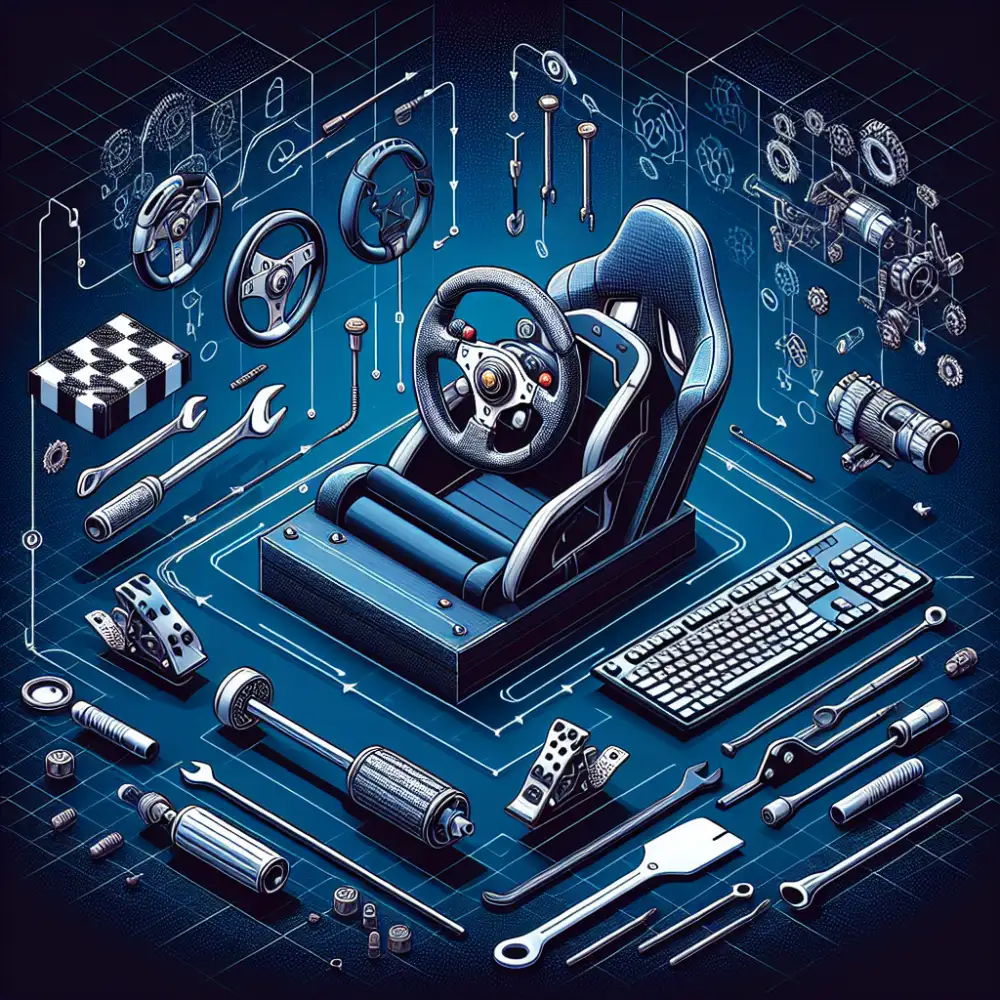
Research and Compare: Stay updated on the latest sim racing technology. Read reviews, watch comparison videos, and join online communities to learn about new products and trends. This research will help you make informed decisions that stand the test of time.
By keeping these tips in mind, you can build a sim racing rig that not only meets your current needs but also grows with you as you dive deeper into the world of virtual motorsport.
Published: 03. 07. 2024
Category: Technology

